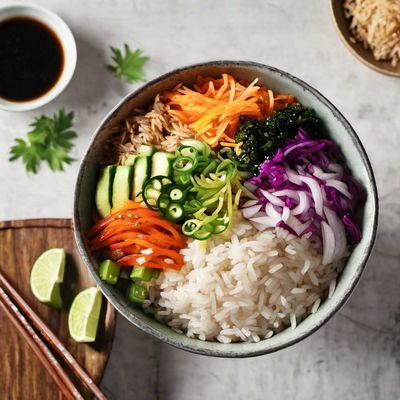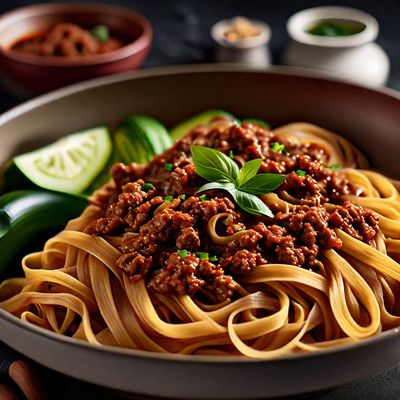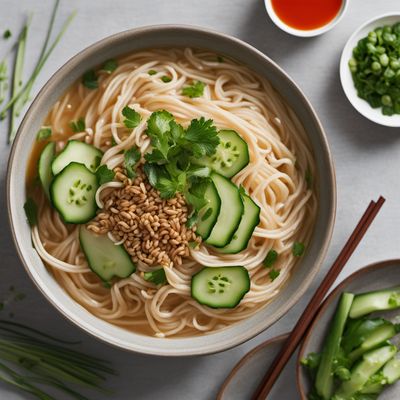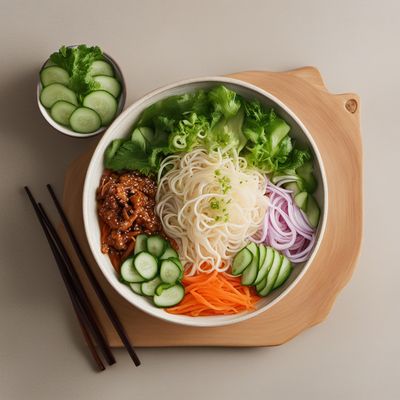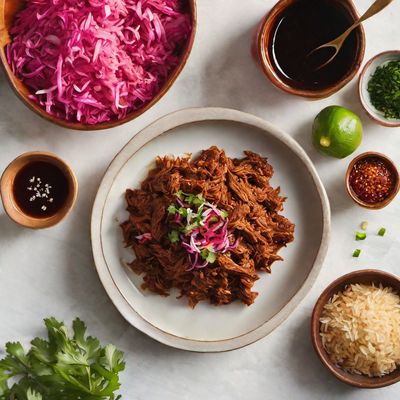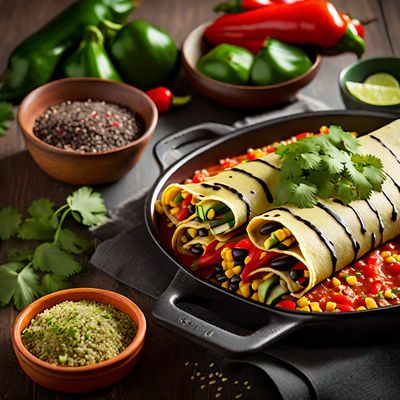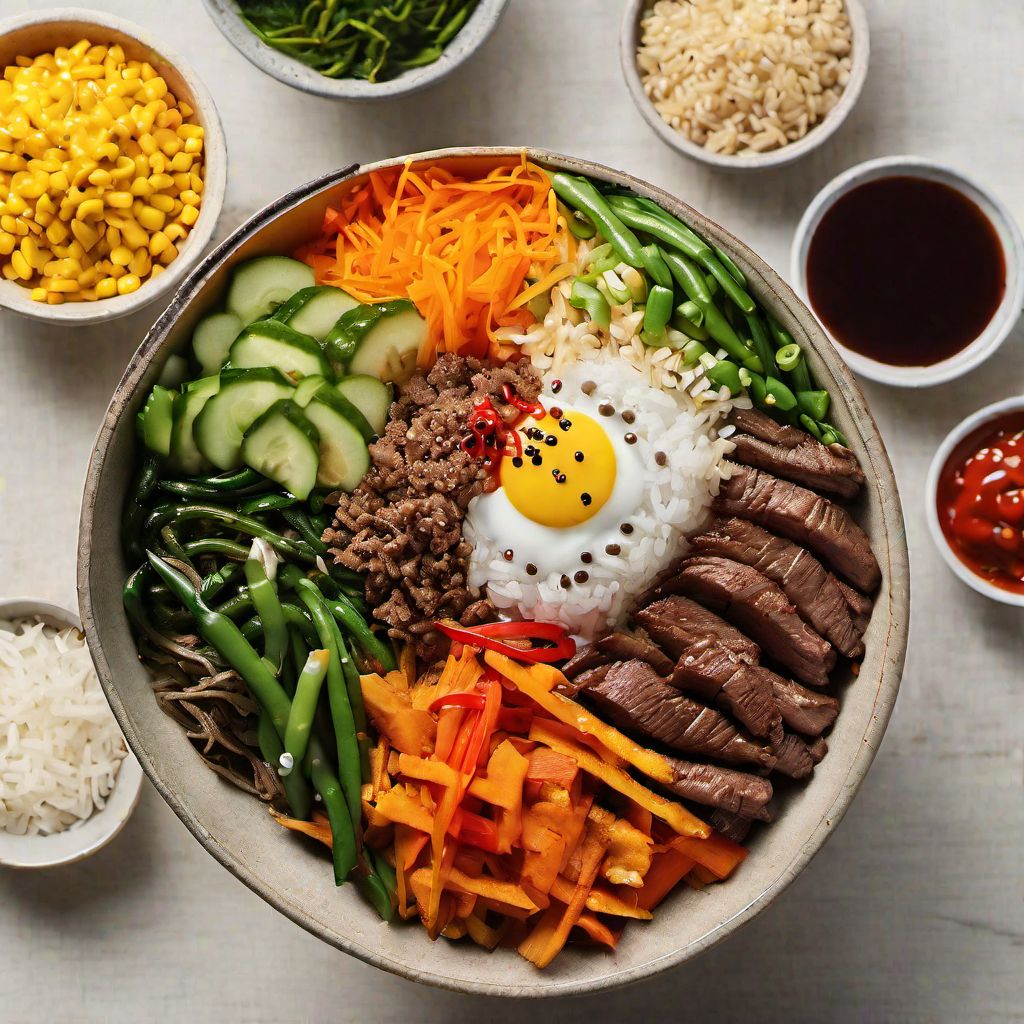
Recipe
Peruvian-style Bibimbap
Inca-inspired Bibimbap: A Fusion of Korean and Peruvian Flavors
4.9 out of 5
In the vibrant culinary landscape of Peruvian cuisine, we bring you a unique twist on the classic Korean dish, Bibimbap. This Peruvian-style Bibimbap combines the bold flavors of Peru with the traditional elements of Bibimbap, resulting in a harmonious fusion that will tantalize your taste buds.
Metadata
Preparation time
20 minutes
Cooking time
15 minutes
Total time
35 minutes
Yields
4 servings
Preparation difficulty
Medium
Suitable for
Gluten-free, Dairy-free, Nut-free, Low-carb, High-protein
Allergens
N/A
Not suitable for
Vegan, Vegetarian, Paleo, Keto, Pescatarian
Ingredients
While the original Korean Bibimbap typically features ingredients like gochujang (Korean chili paste) and kimchi, our Peruvian adaptation incorporates Peruvian spices and ingredients such as aji amarillo (Peruvian yellow chili pepper) and rocoto (Peruvian red chili pepper). Additionally, we substitute traditional Korean vegetables with Peruvian vegetables like sweet potatoes and corn to add a touch of Andean flair. We alse have the original recipe for Bibimbap, so you can check it out.
-
2 cups (470ml) cooked white rice 2 cups (470ml) cooked white rice
-
1 tablespoon vegetable oil 1 tablespoon vegetable oil
-
1 red onion, thinly sliced 1 red onion, thinly sliced
-
2 cloves garlic, minced 2 cloves garlic, minced
-
1 pound (450g) beef tenderloin, thinly sliced 1 pound (450g) beef tenderloin, thinly sliced
-
2 tablespoons soy sauce 2 tablespoons soy sauce
-
1 tablespoon aji amarillo paste 1 tablespoon aji amarillo paste
-
1 tablespoon rocoto paste 1 tablespoon rocoto paste
-
1 cup (150g) cooked quinoa 1 cup (150g) cooked quinoa
-
1 cup (150g) cooked sweet potatoes, diced 1 cup (150g) cooked sweet potatoes, diced
-
1 cup (150g) cooked corn kernels 1 cup (150g) cooked corn kernels
-
1 cup (150g) cooked green beans, sliced 1 cup (150g) cooked green beans, sliced
-
4 eggs, fried or poached 4 eggs, fried or poached
-
Salt and pepper to taste Salt and pepper to taste
-
Fresh cilantro, for garnish Fresh cilantro, for garnish
Nutrition
- Calories (kcal / KJ): 450 kcal / 1884 KJ
- Fat (total, saturated): 12g, 4g
- Carbohydrates (total, sugars): 55g, 6g
- Protein: 30g
- Fiber: 6g
- Salt: 2g
Preparation
-
1.Heat the vegetable oil in a large skillet over medium heat. Add the sliced red onion and minced garlic, and sauté until the onion is translucent.
-
2.Add the beef tenderloin slices to the skillet and cook until browned. Stir in the soy sauce, aji amarillo paste, and rocoto paste. Cook for an additional 2-3 minutes until the beef is cooked through. Season with salt and pepper to taste.
-
3.In a serving bowl, arrange the cooked white rice, quinoa, sweet potatoes, corn kernels, and green beans.
-
4.Top the rice and vegetables with the cooked beef and fried or poached eggs.
-
5.Garnish with fresh cilantro and serve hot.
Treat your ingredients with care...
- Beef tenderloin — For a tender and juicy result, make sure to slice the beef against the grain.
- Aji amarillo paste — Adjust the amount of aji amarillo paste according to your desired level of spiciness.
- Rocoto paste — Be cautious when handling rocoto peppers as they can be very spicy. Use gloves or wash your hands thoroughly after handling them.
- Quinoa — Rinse the quinoa thoroughly before cooking to remove any bitterness.
- Sweet potatoes — Choose sweet potatoes that are firm and free from blemishes for the best texture and flavor.
Tips & Tricks
- To add a Peruvian twist, you can garnish the Bibimbap with sliced avocado or a drizzle of huacatay sauce.
- Experiment with different Peruvian vegetables like yuca or purple potatoes for a unique variation.
- If you prefer a vegetarian version, you can substitute the beef with grilled tofu or tempeh marinated in Peruvian spices.
- For an extra burst of flavor, squeeze some fresh lime juice over the Bibimbap before serving.
- Don't be afraid to customize the toppings to your liking. Add sliced radishes, pickled onions, or even a dollop of Peruvian salsa criolla.
Serving advice
Serve the Peruvian-style Bibimbap hot, allowing the flavors to meld together. Mix all the ingredients together before enjoying to fully experience the fusion of flavors.
Presentation advice
For an eye-catching presentation, arrange the colorful ingredients in a circular pattern on a large serving platter. Place the fried or poached eggs in the center and garnish with fresh cilantro.
More recipes...
For Bibimbap » Browse all
For Korean cuisine » Browse all
More Korean cuisine dishes » Browse all
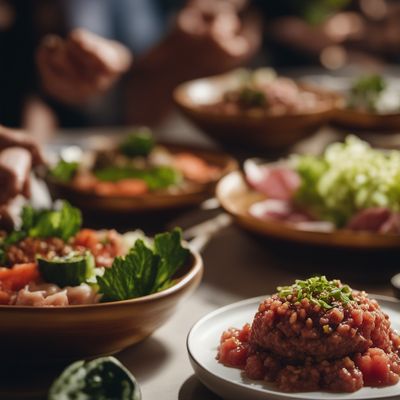
Yukhoe
Korean Beef Tartare
Yukhoe is a traditional Korean dish that is made with raw beef. It is a delicate and flavorful dish that is perfect for those who love sushi and sashimi.
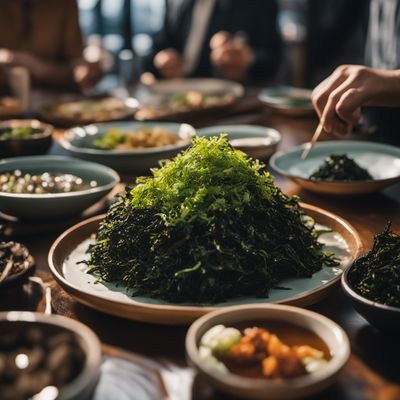
Gim gui
Roasted Seaweed
Gim gui is a Korean dish made from grilled seaweed.
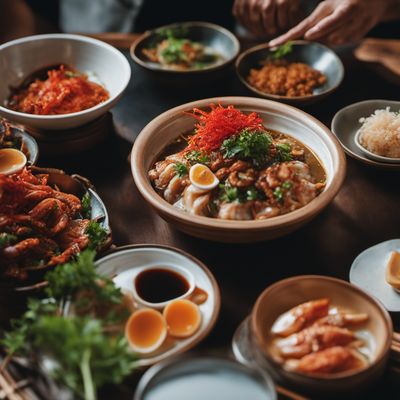
Gejang
Gejang is a traditional Korean dish that is made with raw crab marinated in soy sauce and other seasonings. It is typically served as an appetizer.
More Peruvian cuisine dishes » Browse all

Chupín de pescado
Fish Stew
Chupín de pescado is a traditional Argentine fish stew made with a variety of fish and vegetables. It is a hearty and flavorful dish that is...

Cordero al palo
Peruvian roasted lamb
Cordero al palo is a traditional Chilean dish that is cooked on a spit. The dish is known for its smoky flavor and tender meat.

Sánguche de potito
Tripe sandwich
Sánguche de potito is a traditional Chilean sandwich that is made with beef tongue and a variety of toppings. It is a hearty and flavorful...

